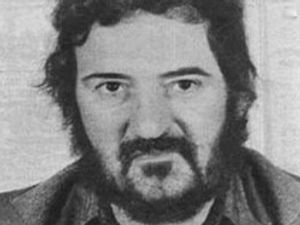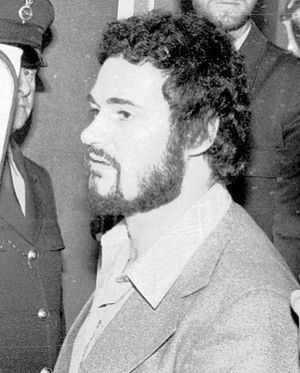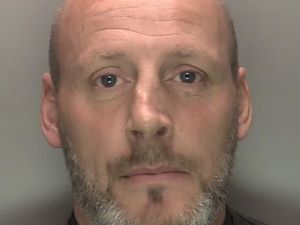30 years since the Yorkshire Ripper was sentenced to life behind bars
He was, the prosecution accepted, insane.

Thirteen women brutally murdered, others savagely attacked, but no jail term lined up for the infamous Yorkshire Ripper despite his reign of terror in northern England.
Peter Sutcliffe was diagnosed by four psychiatrists as being a paranoid schizophrenic, acting under the delusion that God had instructed him to kill prostitutes.
So when he was brought before the Old Bailey, the prosecution was minded to accept the serial killer's plea of not guilty to murder, but guilty to manslaughter through diminished responsibility.
That would have seen him go straight into a secure hospital without the need for a trial.
But the judge would not have it. He directed that Sutcliffe would have to stand trial for murder and that his sanity – and therefore criminal culpability – was a matter for a jury.
The jury found him guilty of 13 murders. In effect, the jurors were saying he was not mad, but bad.
And on this day in 1981, May 22, Sutcliffe, who had also pleaded guilty to seven attempted murders, was sentenced to life imprisonment with a minimum term of 30 years.

That would take us to 2011. So why is he not out? It's because in 2010 a whole life tariff was imposed. Sutcliffe will die in prison.
In the wake of his trial, there was a twist. At first Sutcliffe was sent to an ordinary prison.
But those psychiatrists were proven right as he turned out to be mad after all. After three years in Parkhurst prison on the Isle of Wight he was diagnosed with paranoid schizophrenia and sent to Broadmoor, the secure psychiatric hospital.
And in a further twist in the "mad" or "bad" conundrum, after three decades at Broadmoor, a health tribunal found Sutcliffe no longer needed treatment for any mental disorder and in 2016 he was moved to HMP Frankland in Durham.
Today he is aged 73 and calls himself Peter Coonan – his mother's maiden name. A number of attacks during his time locked up have left him blind in one eye and having to have 30 stitches in facial cuts.
Nobody knows how many women Sutcliffe attacked. The first officially recognised Ripper assault was in 1975 and the killings in the Yorkshire and Greater Manchester areas continued until the time of his arrest.
But he is suspected of being behind a number of unsolved crimes.
As a Bradford lorry driver, he travelled widely, and is known to have made a number of deliveries to the then Eaton Yale factory in Halesfield, Telford, and would have stayed in the area overnight.

Typically he would attack his victims from behind with a hammer, before stabbing them with a screwdriver or knife. While his self-styled divine mission was to kill prostitutes, not all his victims were.
It was the savage 1977 murder in Leeds of Jayne MacDonald, a 16-year-old shop assistant, which propelled into national headlines the wave of killings. The feared serial killer was now dubbed the Yorkshire Ripper by the press.
The body of one of his victims was discovered by actor Bruce Jones, who played taxi driver Les Battersby in Coronation Street.
The police investigation was so overwhelmed by the mass of information it received that nobody was able to join the dots.
An infamous hoax in the form of a series of taunting letters and a tape recording purporting to be from the killer fooled police and led to them misdirecting their efforts.
“I'm Jack,” he declared mockingly – a reference to Jack the Ripper. “I see you're still having no luck catching me…”
Police were convinced it was genuine and were led on a wild goose chase hunting for a culprit in the Sunderland area, whose accent led to him being dubbed Wearside Jack.

The tape created a safe space for Yorkshireman Sutcliffe who had been interviewed by police several times, but whose Bradford accent now seemed to rule him out. With the inquiry derailed, he went on to kill three more women.
The reckoning came in a cold case review in 2005 when police matched DNA in saliva on one of the envelopes to hoaxer John Humble. He was jailed in 2006 for eight years for perverting the course of justice.
Alcoholic Humble drank himself to death last July.
In the end Sutcliffe was caught by routine police work, when two Sheffield officers checked on a man and a prostitute in a car in a red light area on January 2, 1981. The car had false plates.
He was questioned at the police station. One of the arresting officers remembered that before being taken to the police station Sutcliffe had asked to answer a call of nature. He returned to search the scene and discovered a ball pein hammer and knife dumped behind a small oil storage tank.
Sutcliffe had also hidden a knife in the cistern of the police station's toilet.
Confronted, he confessed to being the Yorkshire Ripper, and made a long and detailed statement.
Police had got their man.
At last, a great shadow had been lifted.





